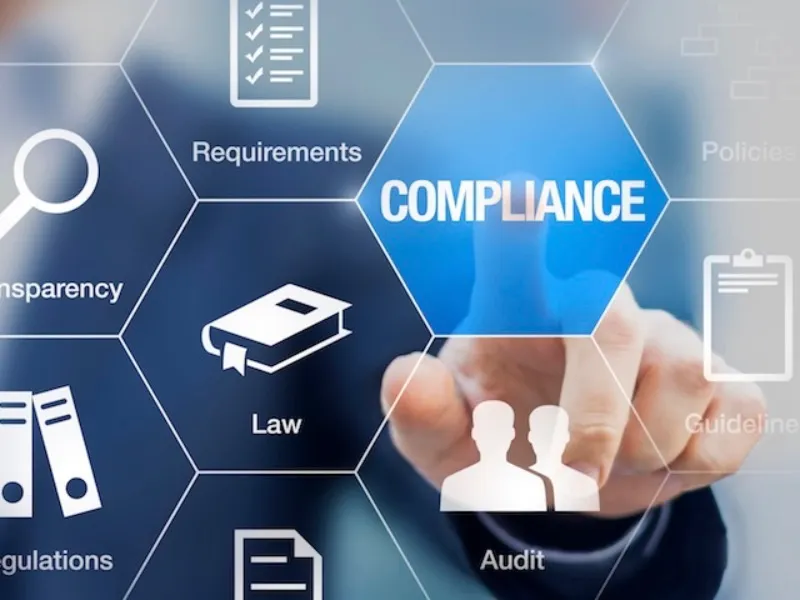- IT compliance is far more than a regulatory checkbox; it is the linchpin of modern business strategy.
- Trust is the currency of the digital age, and IT compliance is the cornerstone of trustworthiness.
IT compliance is far more than a regulatory checkbox; it is the linchpin of modern business strategy. Imagine a fortress designed to repel attacks; this is IT compliance for modern businesses. Its significance stretches far beyond mere adherence to regulations; it is the keystone of trust, security, and operational efficiency in an era where data is as valuable as gold.
It shields organisations from legal and financial repercussions, guards against data breaches, builds trust, enhances operational efficiency, and adapts to the ever-changing digital landscape. In a world where data is the new currency, IT compliance is the essential guardian ensuring that this currency remains safe and secure.
Also read: Dazz raises $50M, advancing AI-driven cloud cybersecurity
Also read: China revises law on state secrets for data security and restrictions
Shielding against legal and financial fallout
Picture this: A company’s sensitive data is breached, leading to a scandalous public revelation. The financial consequences? Catastrophic. The fallout? Potentially devastating to the company’s reputation.
This is not a hypothetical scenario but a reality, as evidenced by the infamous Equifax data breach of 2017. This incident, which exposed the personal information of over 147 million individuals, resulted in a $700 million settlement and massive reputational damage. IT compliance acts as a preemptive strike, helping businesses avoid such perilous situations by ensuring adherence to legal and regulatory standards. Non-compliance is a gamble with high stakes; IT compliance is the insurance policy.
Guarding the gates of data security
In a world where a single data breach can unravel a company’s entire digital fabric, IT compliance is the sentinel on duty. Consider the General Data Protection Regulation (GDPR) enforced by the European Union, a stringent framework designed to protect personal data. Since its implementation, GDPR has led to substantial fines for companies that failed to safeguard customer information.
For instance, British Airways faced a record £183 million ($226 million) fine for a data breach that compromised the personal details of 500,000 customers. IT compliance ensures that companies implement robust security measures, such as encryption and access controls, thereby fortifying the gates against unauthorised intrusions.
Building trust and upholding reputation
Trust is the currency of the digital age, and IT compliance is the cornerstone of trustworthiness. When customers, partners, and stakeholders see that a company is committed to upholding stringent data protection standards, their confidence in the organisation’s ability to safeguard their information is solidified. Think of IT compliance as the badge of honour that signifies a company’s dedication to protecting its data.
Apple’s commitment to privacy and data protection has become a central element of its brand identity, fostering customer loyalty and enhancing its reputation. In contrast, companies plagued by compliance failures often find their reputations in tatters, struggling to regain public trust.
Enhancing operational efficiency
Imagine navigating a ship through stormy seas; having a well-charted course and established procedures can make the difference between safe passage and disaster. Similarly, IT compliance provides a roadmap for efficient operations. By establishing clear policies and procedures, companies can streamline their IT processes, reducing the risk of errors and enhancing productivity.
For example, financial institutions adhering to the Sarbanes-Oxley Act (SOX) benefit from standardised procedures for financial reporting and internal controls, which not only ensure compliance but also improve overall operational efficiency.
Navigating the evolving digital landscape
As technology continues to evolve, so too does the landscape of IT compliance. Staying ahead of emerging threats and adapting to new regulations is not just a regulatory requirement but a strategic imperative.
The rise of cloud computing and remote work has introduced new compliance challenges, necessitating updates to data protection measures and policies. Companies that embrace IT compliance as a dynamic and evolving practice are better positioned to navigate these changes, ensuring they remain resilient in the face of new threats and regulatory demands.

